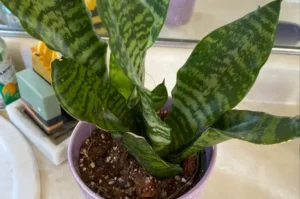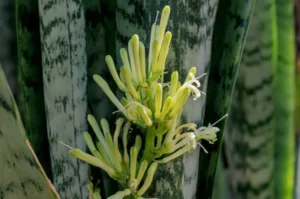If you love houseplants, you probably have a snake plant somewhere in your home. Also known as Sansevieria or Dracaena trifasciata, this low-maintenance beauty is popular for its upright, sword-like leaves and air-purifying qualities. But what happens when you want more of them?
Luckily, rooting a snake plant is a great way to grow new plants from cuttings. Whether you’re a beginner or an experienced plant parent, this guide will walk you through how to root a snake plant step-by-step.
Why Root a Snake Plant?
Before diving into the methods, let’s quickly understand why people root snake plants:
- Propagation: Create more plants for free.
- Healthier Growth: Trimming and rooting can help rejuvenate an overgrown or damaged plant.
- Sharing: It’s a great way to gift plants to friends and family.
- Save a Dying Plant: Rooting may help preserve parts of a snake plant that’s been damaged by rot or pests.
Best Time to Root a Snake Plant
The ideal time to root a snake plant is during the spring or summer months, when the plant is actively growing. Warmer temperatures and longer daylight hours encourage faster root development.
Tools and Materials You’ll Need
To root your snake plant successfully, gather the following:
- Clean, sharp scissors or pruning shears
- A clean container or pot
- Well-draining potting mix (preferably cactus or succulent soil)
- Optional: Rooting hormone
- Water
- Glass jar (for water propagation)
Method 1: Rooting Snake Plant in Water
Step 1: Cut the Leaf
Choose a healthy, mature leaf from your snake plant and cut it near the base using sterilized scissors. You can cut the leaf into 3–4 inch sections if you’d like multiple new plants.
Step 2: Let It Callous
Allow the cut end(s) to dry out and callous for a day or two. This helps prevent rot when placed in water.
Step 3: Place in Water
Fill a glass jar with water and place the cut end into the water. Make sure only the bottom part of the leaf is submerged.
Step 4: Change Water Regularly
Change the water every 3–5 days to keep it fresh and prevent bacteria buildup.
Step 5: Wait for Roots
You should see roots forming in about 3–5 weeks. Once the roots are at least 1 inch long, you can transfer the cutting into soil.
Method 2: Rooting Snake Plant in Soil
Step 1: Cut and Dry
Just like in the water method, start by cutting a healthy leaf and let the end dry for 24–48 hours.
Step 2: Optional – Use Rooting Hormone
Dip the cut end into rooting hormone powder to encourage faster root development and prevent rot.
Step 3: Plant in Soil
Place the cuttings upright into a pot filled with well-draining soil. Push them in about an inch deep.
Step 4: Water Sparingly
Water lightly after planting, then wait until the soil is completely dry before watering again. Overwatering can cause the cuttings to rot.
Step 5: Be Patient
Soil propagation can take a little longer. It may take 6–8 weeks before roots begin to grow. Keep the plant in a warm, indirect light location.
Method 3: Propagation by Division
This method is ideal if your snake plant is already mature and has multiple rhizomes or shoots.
Step 1: Remove the Plant
Carefully remove the plant from its pot and shake off excess soil.
Step 2: Divide the Rhizomes
Use a clean knife or shears to divide the root clumps. Each section should have roots and at least one leaf or shoot.
Step 3: Replant
Plant each divided section into a new pot with fresh soil. Water lightly and care for it as usual.
How Long Does It Take for a Snake Plant to Root?
Depending on the method and conditions, rooting a snake plant can take anywhere from 3 to 8 weeks. Water propagation is usually faster, while soil propagation and division take a bit longer. Keep the plant in a warm spot with indirect sunlight for best results.
Common Mistakes to Avoid
- Overwatering: Snake plants are prone to rot. Always let the soil dry out between waterings.
- Skipping the callous step: Don’t plant freshly cut leaves right away. Let them dry first.
- Wrong soil: Avoid regular potting soil. Use a mix designed for succulents or cactus.
- Lack of patience: It may take weeks before you see any signs of rooting. Don’t give up!
Frequently Asked Questions (FAQs)
Can I root a broken leaf?
Yes, if the broken leaf is healthy, you can root it either in water or soil after letting the cut end callous.
Do I need to use rooting hormone?
It’s optional. Rooting hormone can speed up the process, but many people successfully root snake plants without it.
Is water propagation better than soil?
Not necessarily. Water propagation is easier to monitor since you can see the roots. Soil propagation is less work in the long run, as the plant won’t need to be transferred.
Can I root a snake plant without leaves?
No, you need at least part of a leaf or a section of the rhizome (in the division method) for successful propagation.
Conclusion
Rooting a snake plant is simple, fun, and rewarding. Whether you choose water propagation, soil planting, or dividing a mature plant, the key is to be patient and follow the basic care steps. Soon, you’ll have a healthy new snake plant to enjoy or share with someone else.
Not only does this method save money, but it also helps you connect more deeply with your plants. So grab your scissors, pick your favorite method, and start rooting!






